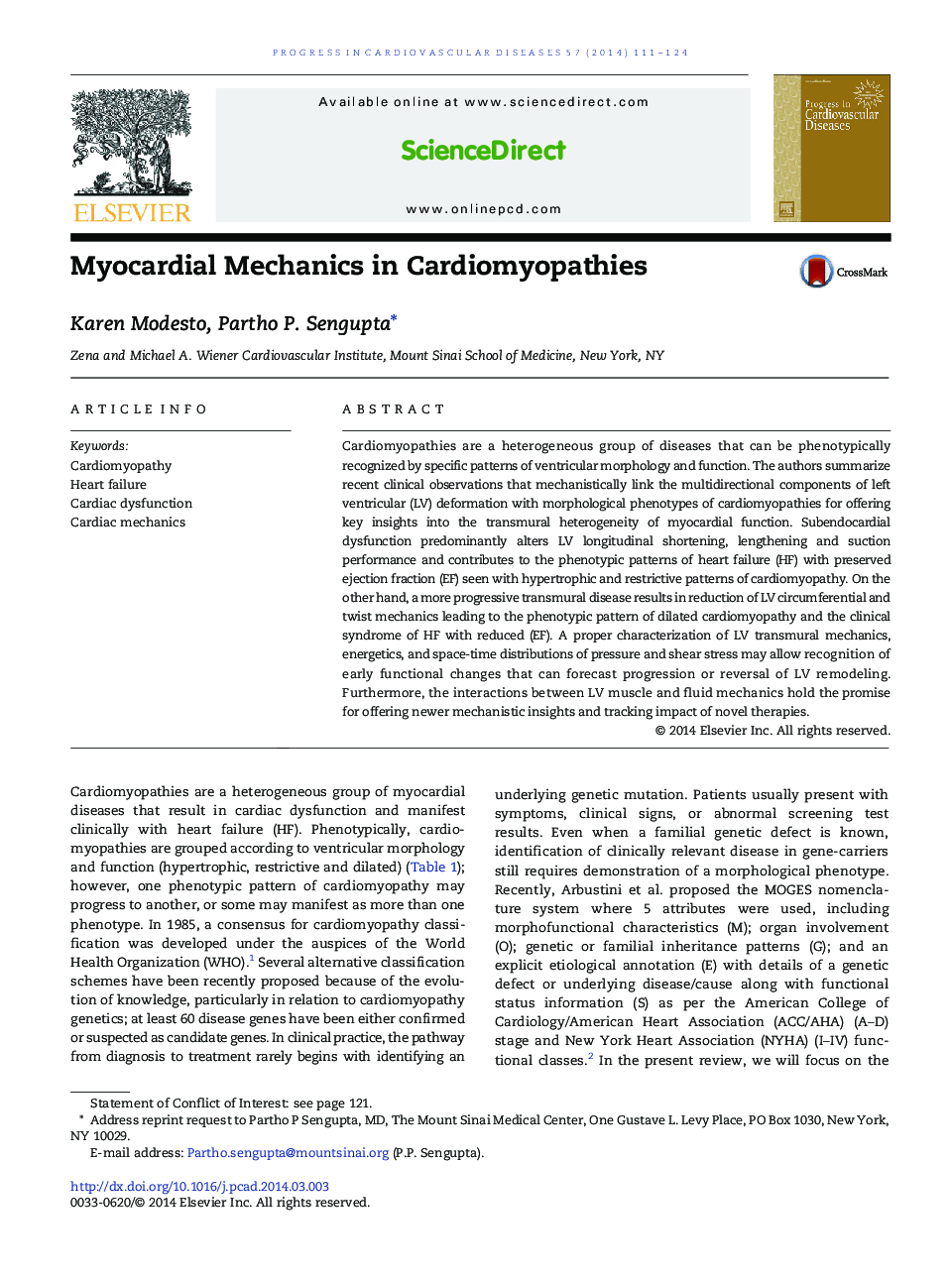| Article ID | Journal | Published Year | Pages | File Type |
|---|---|---|---|---|
| 3006354 | Progress in Cardiovascular Diseases | 2014 | 14 Pages |
Cardiomyopathies are a heterogeneous group of diseases that can be phenotypically recognized by specific patterns of ventricular morphology and function. The authors summarize recent clinical observations that mechanistically link the multidirectional components of left ventricular (LV) deformation with morphological phenotypes of cardiomyopathies for offering key insights into the transmural heterogeneity of myocardial function. Subendocardial dysfunction predominantly alters LV longitudinal shortening, lengthening and suction performance and contributes to the phenotypic patterns of heart failure (HF) with preserved ejection fraction (EF) seen with hypertrophic and restrictive patterns of cardiomyopathy. On the other hand, a more progressive transmural disease results in reduction of LV circumferential and twist mechanics leading to the phenotypic pattern of dilated cardiomyopathy and the clinical syndrome of HF with reduced (EF). A proper characterization of LV transmural mechanics, energetics, and space-time distributions of pressure and shear stress may allow recognition of early functional changes that can forecast progression or reversal of LV remodeling. Furthermore, the interactions between LV muscle and fluid mechanics hold the promise for offering newer mechanistic insights and tracking impact of novel therapies.
